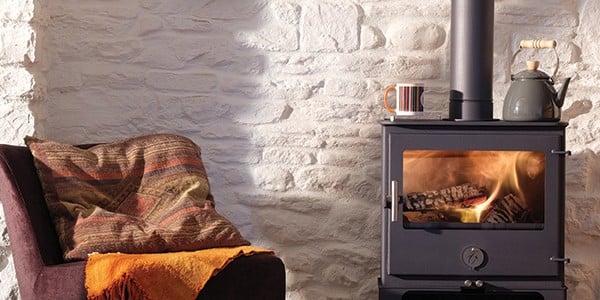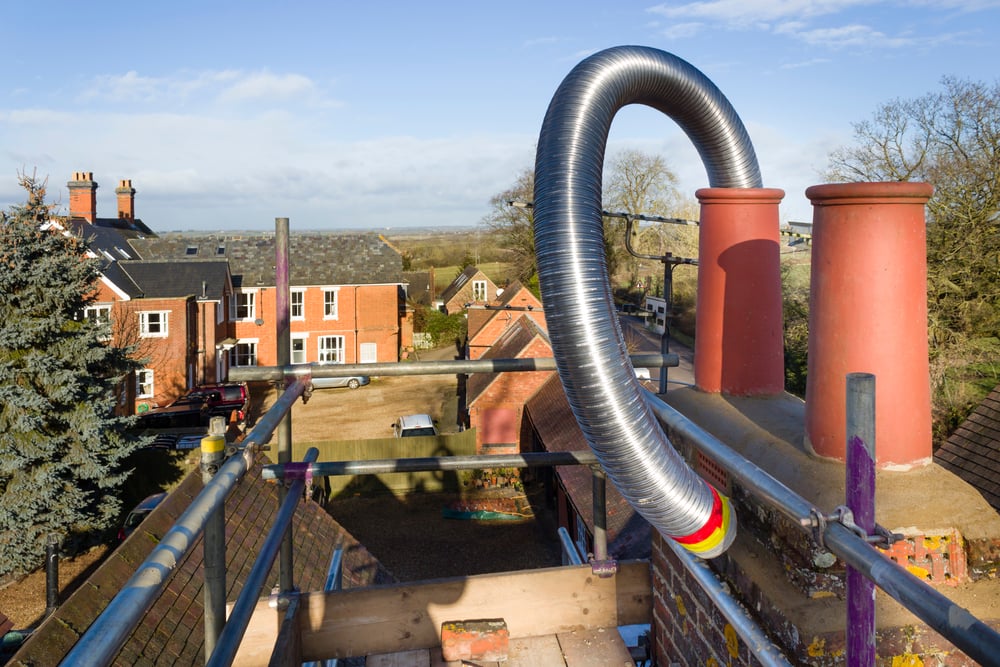Chimney sweep vacuums
Due to the nature of chimney sweeping, sweeps are equipped with specialised vacuums to clear up soot, dust, and other residual materials that have been dislodged from your chimney. These vacuums aren’t like regular household vacuums – they have specialised filters, greater suction, and dust-free bag disposal.
What vacuums do chimney sweeps use?
Chimney sweeps remove deposits of dangerous substances that are harmful to your health and the environment, such as creosote and soot. Removing these from your chimney is just one part of the job; they also have to be safely captured and disposed of. A chimney sweep’s vacuum enables the safe capture and disposal of harmful substances, preventing dust from being inhaled or making a mess of your property.
In addition to the visible deposits, extremely fine matter falls during a sweep such as combustion particles and microparticles of soot. Whilst your sweep will seal your fireplace with sheeting or sponge to prevent these materials from escaping, some of these fine particles can still escape. Using a H-Class vacuum with a HEPA filter ensures that any particles that slip past the seal can be safely captured.
HEPA filters
Your HETAS Approved Chimney Sweep’s vacuum will have a HEPA (high efficiency particulate air) filter. A HEPA filter greatly improves the safety of a sweep by securely containing harmful particles; HEPA filters remove 99.97-99.99% of airborne particles of 0.3µm or greater whereas non-HEPA filters found in standard vacuums only remove 80-85% of particles of 0.3µm or greater.
HEPA-filtered vacuums trap vacuumed particles by forcing air through a filter sheet that contains randomly arranged fibres. This traps the extracted particles via interception, impact, and diffusion in the filter sheet, preventing them from escaping and recirculating.
A standard vacuum without a HEPA filter can recirculate extracted particles back into the air, making it unsuitable for extracting dangerous substances such as soot and combustion particles. A HEPA filter ensures that the captured particles are securely kept inside the vacuum.
Dust extractor classes
L-Class
L-Class dust extractors are used for low hazard extractions.
These are commonly used for low hazard particles, such as: softwood dust, household dust, and household soils.
L-Class dust extractors are primarily used for removing simple and harmless dust, such as in a household where few dangerous substances need to be vacuumed. L-Class extractors are not suitable if any of the material being vacuumed could cause health hazards.
M-Class
M-Class dust extractors are used for medium hazard extractions.
These are primarily used for mildly hazardous particles, such as: hardwood dust, paint dust, concrete dust, and brick dust.
M-Class dust extractors are commonly used on construction sites due to the dust produced being more hazardous, with M-Class extractors being the minimum legal requirement for construction. M-Class extractors have a higher suction rate than L-Class extractors and often come with an alarm notifying the user if the suction rate has considerably dropped.
M-Class dust extractors come equipped with additional features, such as:
- Durable filter that is difficult to pierce.
- Velocity indicator with a warning if the air velocity falls below 20m/s.
- Securely sealed waste bags that enable dust-free disposal.
H-Class
H-Class dust extractors are used for high hazard extractions.
These are essential when working with dust containing highly hazardous (carcinogenic or pathogenic) particles, such as: asbestos, mould, and soot.
H-Class dust extractors also offer all the benefits of M-Class extractors, but with increased filtration and suction power.
L-Class
Maximum permeability of ≤ 1.0% dust particles
Maximum allowable concentrations of > 1mg/m³
M-Class
Maximum permeability of ≤ 0.1% dust particles
Maximum allowable concentrations of > 0.1mg/m³
H-Class
Maximum permeability of ≤ 0.005% dust particles
Maximum allowable concentrations of > 0.1mg/m³
Maximum permeability
The key difference to note between M-Class and H-Class extractors is the maximum permeability. Whilst the maximum allowable concentrations remain the same across these two classes, the maximum permeability is much lower in H-Class extractors.
Maximum permeability is the maximum percentage of particles that can penetrate back through the filter when the extractor is in use.
When using a H-Class extractor, ≤ 0.005% of dust particles are able to escape back through the filter. Comparing this to ≤ 0.1% of an M-Class extractor, it is clear why a H-Class vacuum is necessary when sweeping a chimney. A maximum permeability of ≤ 0.005% of dust particles greatly reduces the risk of harmful soot particles being present following a sweep.
For reference, a FFP1 face mask has a maximum permeability of 6% dust particles. A H-Class extractor grants a much higher level of protection compared to a face mask and grants assured safety for you and your sweep.
Dangers of using the incorrect vacuum
Using a non H-Class vacuum for hazardous materials such as soot particles is extremely dangerous. These particles are too fine to be sufficiently extracted and can recirculate in the air. There is also a risk that an L-Class vacuum catches fire when used for the incorrect substances as it is not equipped to tackle these materials.
HETAS Approved Chimney Sweeps will come equipped with the correct tools to enable a robust and safe sweep. H-Class vacuums with HEPA filters provide a comprehensive and safe clean to ensure that minimal soot particles are present following a chimney sweep. As soot is a carcinogenic substance, your sweep will have their vacuum running continuously during sweeping to ensure residual soot particles are captured and can be safely disposed of.



